I’ve often wondered why grouse and woodcock hunting has such a rich literary tradition. The easy explanation, I suppose, is because it’s intrinsically more poetic than other “shooting sports,” bearing much the same relationship to them that fly-fishing for trout and salmon bears to other styles of angling. The literature of trout and salmon fishing, of course, absolutely dwarfs that of all other forms of the sport, and while the separation may not be quite as great between grouse and woodcock writing and all the rest the margin is still pretty substantial. There’s some wonderful writing about bobwhite quail hunting but once you get beyond Nash Buckingham and Havilah Babcock the pickings get mighty slim.
Speaking of quail hunting, a take-no-prisoners quail hunter I met in Texas a while back offered an alternative explanation for the abundance of prose devoted to grouse hunting.
“I expect you do a lot of grouse hunting up there in Wisconsin,” he remarked after we’d been introduced.
“I do my share,” I said. “Have you done much of it?”
“Some,” he said. “But in my experience grouse hunting reads better than it plays.”
Still tasting the bitter stew of low bird numbers, spotty dog work, and horrid shooting that the last few seasons have served up for me, I’m beginning to think he might have a point.
Whatever the reasons are—the beautiful places the sport takes us and the magical time of year when we go; the brilliant characters of the birds themselves (also the challenges they pose and the rewards they offer); the energy and courage of the dogs and the camaraderie of old friends—the pursuit of grouse and woodcock has inspired some of the finest hunting writing there is. Poll any representative cross-section of sportsmen on the greatest hunting story ever written and it’s a slam-dunk certainty that Corey Ford’s “The Road to Tinkhamtown” would top the list, although in my opinion Robert Murphy’s haunting “The Phantom Setter” doesn’t give an inch to it.
As readers, we’re blessed. It’s a good thing, too, because the grouse and woodcock season is so brief, and so intense, that it unfailingly leaves us hungry for more. The surest way to satisfy this need is to swirl a couple fingers of Kentucky’s finest in a glass with a cube or two of ice, select a favorite volume from the shelf, settle into a comfortable chair, and prepare to be spirited away. If there’s a dog curled up nearby, so much the better. Reading about grouse and woodcock hunting isn’t the same as the real thing, but in some ways it’s better. When you open a book by the writers whose work endures—the writers whose work comprises the sport’s literary canon—you never come away empty-handed.
If there’s a Holy Trinity of grouse and woodcock writers, it’s Burton Spiller, William Harnden Foster, and George Bird Evans. And while I have my own thoughts on the matter it’s likely that Spiller, the author of such classic titles as Grouse Feathers, More Grouse Feathers, and Drummer in the Woods, would be rated first among equals by most in the grouse and woodcock camp. It’s not for nothing, after all, that he’s been called “the Poet Laureate of grouse hunting.”
The somewhat ironic thing about Spiller’s enduring popularity is that the sport has a tweedy, slightly snobbish cachet (another parallel with trout and salmon fishing), yet Spiller was the furthest thing from a blueblood. The son of a blacksmith, he worked as a blacksmith, a welder, a shipbuilder, and a grower of gladiolus bulbs. Yes, he shot a Parker, but he also shot a pumpgun. As did his most frequent hunting companion, the crack shot he referred to in print only as Gene.
Burton Spiller was, in short, an Everyman, and therein lies much of the charm of his writing. He brought us along, shared his hilly New Hampshire covers with their stone fences and alder runs and “thrifty” apple trees, introduced us to his four-legged companions and his two-legged ones. His pet term for woodcock, “little russet fellers,” became part of the vocabulary of all of us who adore these enigmatic birds. His knowledge was extensive, his wisdom profound, but he wore it lightly. He never talked down to his readers, and he never set himself up as an “expert.” He was simply a bird hunter with a lot of miles on his boots who’d learned a thing or two that perhaps other bird hunters could profit from.
And in the way life has of imitating art, Spiller’s accounts of days afield—shots made and shots missed, birds pointed and birds that flushed wild, hunts that began miserably and ended triumphantly, the whole panoply of possibilities—are the templates for our own. When we read Burt Spiller, we recognize ourselves.
Once in a great while a desperate magazine editor, having scraped the bottom of the writer barrel and come up empty, asks me to do a grouse hunting piece with a “how to” slant. I’ll cobble something together, send it off—and the next time I crack William Harnden Foster’s New England Grouse Shooting I’ll come to the rueful conclusion that I said nothing (nothing of value, anyway) that he didn’t say 70 years ago. I’ll also conclude that he said it a hell of a lot more eloquently than I did—or could.
In short, I think William Harnden Foster’s the man.
Foster’s lively prose is only part of the appeal of New England Grouse Shooting. He was a fabulous artist, formally trained in the precepts of the Brandywine School founded by Howard Pyle, and the illustrations he created for NEGS are wonders. It’s impossible to imagine the book without them. Chapters like “The Little Gun” (the 16-gauge Parker hammergun Foster shot as a youth) and “A Lesson in Grouse Hunting,” imbued with charm and leavened by Foster’s yeasty wit, are minor masterpieces unto themselves, but the entire book is a delight.
Foster was a nationally recognized authority on pointing dogs (also a prominent breeder of pointers) and he was among the first to champion the faster, wider-ranging type of grouse dog as a better choice, functionally and aesthetically, than the slower, more methodical dogs that were a throwback to the market hunting era. He was also one of the first to champion the 28-gauge—“Light but spiteful,” he called it—as a legitimate grouse gun, although his son William Jr. later divulged that his father’s affinity for the 28 was due at least in part to a nasty flinch he developed, probably as the result of shooting thousands of rounds of skeet.
That was another of Foster’s distinctions: He was one of the inventors of skeet, and, through his position as Editor of National Sportsman magazine, played a major role in popularizing it.
The great, tragic irony of New England Grouse Shooting is that Foster didn’t live to see it published. In the fall of 1941, at the age of only 59, he dropped dead of a heart attack while walking in the gallery at the New England Field Trial Championship. His book, arguably the most revered in the grouse and woodcock canon, came out a year later.
If Spiller was the working-class Everyman and Foster the accessible public figure, George Bird Evans was the patrician recluse. Living with his wife, Kay, and their homebred English setters at Old Hemlock, their secluded retreat in the West Virginia mountains, Evans seemed to model himself after certain British sportsmen of the 19th century—various Dukes, Earls, and the like who kept to themselves, gunned extensively (on their own estates, of course), and bred their own lines of setters to their own standards over many generations.
And if Spiller is beloved and Foster is revered, Evans remains controversial—worshipped by some, reviled by others. He was not a fan of the Ruffed Grouse Society, he was a relentlessly vocal critic of biologists and wildlife managers (especially in his home state of West Virginia), and he had a curiously lax attitude about canine hip dysplasia, almost as if he didn’t believe it was an issue.
I think my experience as a reader of George Bird Evans mirrors that of a lot of grouse and woodcock hunters: a period of early infatuation followed by a gradual souring. I felt (and still do) that his later work took on a bitter tone, and that this bitterness grew in direct proportion to the increasing numbers of hunters and the decreasing numbers of grouse he found in the “coverts” (he always added the “t”) that he’d once considered his personal fiefdom.
In recent years, however, I’ve come back to a new appreciation of Evans, in particular his delightful first book, The Upland Shooting Life, published by Knopf in 1971, and the first book he published under his own Old Hemlock imprint, An Affair with Grouse, which came out in 1982. In the latter, Evans makes a statement that sums up the emotional highs and lows of grouse hunting better than anything else I’ve read: “I live more richly, and more miserably, during grouse hunting season than at any other time of year.”
I think, too, that no one preached the gospel of quality—not only in dogs and guns but in the totality of the grouse hunting experience—more passionately or eloquently than George Bird Evans. In this respect, his work serves as our moral compass. Ultimately, Evans says, it’s futile to look for quality elsewhere if it isn’t in ourselves.
A few shorter takes. Guy de la Valdène’s Making Game: An Essay on Woodcock is a brilliant book, a kind of extended love poem, really, that traces the woodcock’s place in sport and culture from the days of the Roman Empire and weaves this into the author’s experience as a woodcock hunter, cook, and student of natural history. It also may be the first truly modern (or maybe post-modern) book to have an impact on a mainstream hunting audience.
An exponent of the “new” outdoor writing that emerged in the 1970s in the work of such writers as Thomas McGuane, Russell Chatham, and Robert F. Jones and was published in magazines like Outside, Gray’s Sporting Journal and, at the time, Sports Illustrated, de la Valdène eschews sentimentality and nostalgia. Nor does he sidestep the occasional “excesses” that some sportsmen have been known to indulge in. When you come upon a line like “…on a warm October afternoon, Jim and I, mildly unfocused and tormented by lingering hangovers contracted at all three of the town’s strip joints the night before…” you know you’re not reading your dad’s brand of outdoor writing any more.
Jim Fergus’ A Hunter’s Road comes from the same literary wellspring as Making Game, and while grouse and woodcock hunting comprises only a part (albeit an important one) of this chronicle of a year-long wingshooting odyssey across North America I can’t imagine any bird hunter not finding it enjoyable, enriching, and thought-provoking. Ditto the two essay collections by my great friend and mentor Robert F. Jones, Dancers in the Sunset Sky and The Hunter in my Heart.
Finally, if you have not read Jenny Willow, Mike Gaddis’ enthralling novel about an elderly grouse hunter in the mountains of West Virginia, the champion English setter that unexpectedly enters his life, and the consequences—both tragic and heroic—of their relationship, there’s a hole in your literary resumé that you urgently need to fill. There is also a great pleasure awaiting you. I keep waiting for the movie version (when you read Jenny Willow you can’t help but imagine its cinematic possibilities) but in Hollywood these days the only people who hunt are aborigines and white-collar criminals.












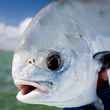




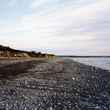




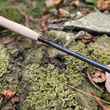




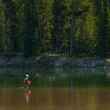
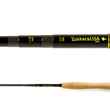

Comments
JJD replied on Permalink
I would have to add : Upland Days "50 years of bird hunting in New England" by William G. Tapply. Fantastic read! What say you?
Daniel Fattibene replied on Permalink
Thank you for bringing attention to so many great upland bird authors and their books, many of which I own and treasure. If I may mention one more: "Algonquin", by Dion Henderson published in 1953. The power and emotion in this book is right up there with that of "Tinkhamtown" and some others you mentioned. It stands out as being very different among bird dog stories. My review of it is on Amazon and Goodreads.
Pages